Innovative Ways to Use Boom Cards – Elementary Music Lesson Ideas
Music Boom Cards are an important tool to develop music reading skills. Check out these elementary music lesson ideas for your classroom.
Some of the links on this site are affiliate links. If you click on a link and make a purchase, I may earn a small commission at no cost to you.
Are you looking for fun and effective ways to engage your students and inspire them to develop their music reading skills? Music Literacy Boom Cards are versatile tools that seamlessly integrate into your elementary music lesson plans.
They provide students with attainable challenges and immediate feedback, all in a game-like environment. Music Boom Cards may be used in many ways. And, you don’t have to have 1:1 devices for each student.
Still skeptical? Read on to see innovative elementary music lesson ideas to develop your students’ music reading skills.
Note: If you’re not sure what Boom Cards are, take a peek at this deck of Rhythm Dictation Boom Cards in action.
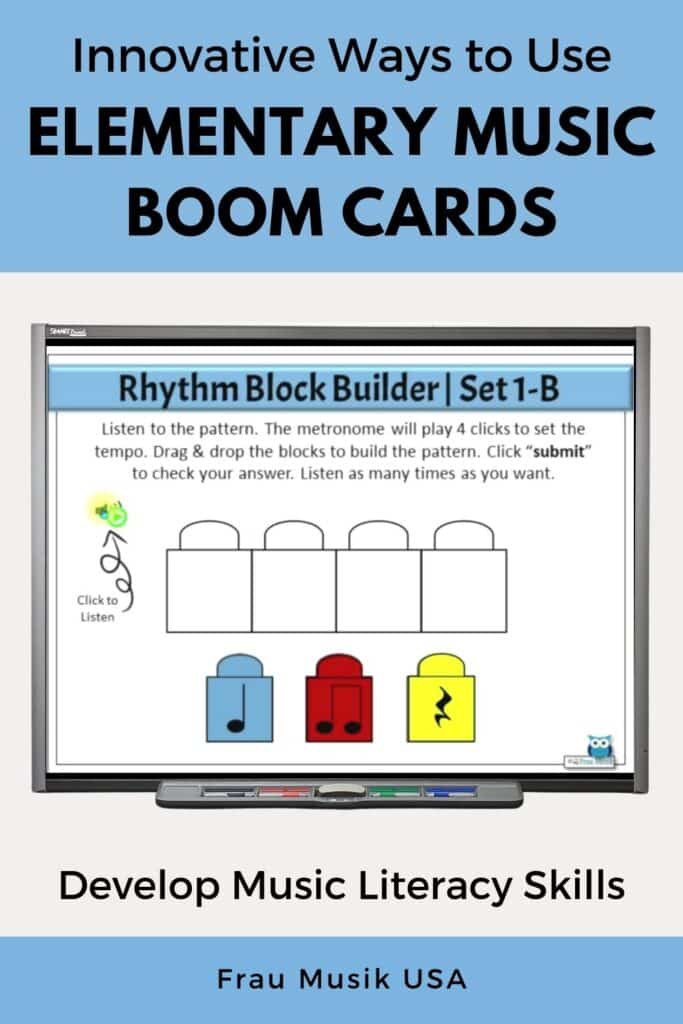
What’s in this post? Click to open the Table of Contents
Start with a song-based curriculum.
Simple songs and learning activities should form the foundation of any elementary music reading program. After you lay that foundation Music Literacy Boom Cards are the perfect way to practice, reinforce, and assess students’ skills.
See the post below to develop a solid music reading strategy for your elementary music classroom – How to Develop and Assess Music Reading Skills.
Then integrate Music Literacy Boom Cards.
Music Literacy Boom Cards are NOT limited to 1:1 activities where each student uses a digital device. My favorite way to use my Boom Cards is for whole-class instruction, but they also work well for centers or stations or small-group instruction.
The techniques below are designed for a large music classroom setting with ALL students answering ALL questions.
Elementary music class activity – Question/All “Write.”
Dictation is an integral part of developing music reading skills and it can be fun! Use the activities below to engage all of your students in rhythm dictation activities to help them develop independent music reading skills and become lifelong musicians.
Display each Boom Card question on the classroom whiteboard while all students write or “build” their answers on paper, on individual write/wipe boards, or even by using simple manipulatives.
💡 Option 1 – Printable Templates
Download and print this Printable Rhythm Block Template for students to write the rhythms they hear.
Or, print the template on card stock and laminate it to create reusable templates. Students may use “write and wipe” markers to notate the rhythm patterns they hear.
💡 Option 2 – Manipulatives
Students may construct the rhythm patterns they hear using stick dictation with popsicle sticks or other manipulatives.
Here’s a fun twist: Students use pretzel sticks (on a paper plate, a napkin, or a clean piece of paper) to construct the rhythm patterns they hear. The best part – when the activity is done, students get to “eat their assignment!” 🥨🎵
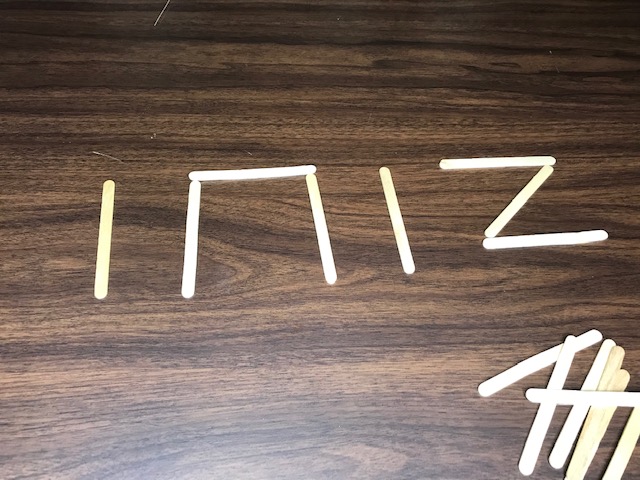
💡 Option 3 – Printable Manipulatives
Use Color, Cut, and Compose templates and rhythm blocks as dictation manipulatives. If students color each of the rhythmic notes the same color, it’s simple for teachers to scan the room and check students’ answers.
Or, consider printing and laminating reusable classroom sets.
Rhythmic Dictation Boom Cards Series
Dictation is FUN with drag-and-drop rhythm blocks. Students listen and “build” the rhythm pattern they hear. They may listen as many times as they need to complete each card. When students make a mistake, they listen again and fix it.
Click the bar below to see what’s included in our Complete Rhythm Dictation Bundle.
Click to See Our Sequential Rhythmic Dictation Boom Cards Sets
- Primer (Free) – Quarter note, quarter rest
- Set 1A – Quarter note, quarter rest
- Set 1B – Quarter note, quarter rest, eighth notes
- Set 2 – Quarter note, quarter rest, eighth notes, half notes
- Set 3 – Quarter note, quarter rest, eighth notes, sixteenth notes
- Set 4 – Quarter note, eighth notes, sixteenth notes, eighth/2 sixteenth
- Set 5 – Quarter note, eighth notes, sixteenth notes, 2 sixteenth/eighth
- Set 6 – Quarter note, quarter rest, eighth notes, syncopation
- Complete Rhythm Dictation Bundle
Melodic manipulatives for melodic dictation.
Students don’t mind fixing their mistakes when it’s as simple as moving a manipulative. Use the Question/All “Write” technique from above with different types of manipulatives for Melodic Dictation.
This Free Treble Clef Staff. It’s perfectly sized to use with pennies or Bingo chips. Print the staff on heavy card stock and laminate it for use with multiple classes over several years.
Pair melodic manipulatives with the following dictation sets.
- Melodic Dictation Boom Cards (Key of C)
- Melodic Dictation Boom Cards (Key of F)
- Melodic Dictation Boom Cards (Key of G)
*Use a piece of yarn or a pipe cleaner for a ledger line if necessary.
Melodic Dictation Boom Cards Series
Similar to the rhythmic dictation sets, students listen and then drag and drop blocks to “build” the MELODY they hear. Again, students may listen as many times as they want. When they make a mistake students should listen again and work to correct their answer.
Click the bar below to see what’s included in our Complete Melodic Dictation Bundles.
Each Melodic Dictation Bundles Includes These Sequential Sets
- Melody Builder – So, Mi (FREE)
- Melody Builder – So, La, Mi
- Melody Builder – Do, Re, Mi
- Melody Builder – Do, Re, Mi + So
- Melody Builder – Do, Mi, So
- Melody Builder – Do, Mi, So + La
- Melody Builder – Do, Re, Mi, So, La
Melodic Dictation Blocks are available in the Key of C, Key of F, and the Key of G.
Note: If your young students are not ready to read ledger lines and notes below the staff, I recommend starting with the Key of F.
Answer with sign language or signals.
For other types of Boom Cards, display each question on the classroom whiteboard and have ALL students respond using sign language and/or signals. This works well when students select the correct answer from multiple-choice questions, such as in the sets below.
Bonus: No copying or cutting or gathering manipulatives is required. Using sign language is a completely no-prep activity. 😊
Ensure accountability and give “think time.”
To promote independent thinking and accountability, have students hide their answer hands where no one can see them. (Under the bottom of their shirt usually works well.) Then, prompt them to “show your answer” simultaneously.
This not only provides everyone with adequate think time but also ensures that each student gives their own responses. It’s an effective strategy for fostering individual engagement and learning.
Use sign language for the music alphabet.
Sign language is a perfect complement to Treble Clef Note Names and Bass Clef Note Names Boom Cards. Students can easily learn the signs for the first seven letters of the alphabet to indicate their answers. Using sign language helps to make the learning experience more interactive and inclusive as well.
The Music Alphabet
A, B, C, D, E, F, G
Tape a sign language poster to the back of your piano or somewhere near the front of your classroom so all students can refer to it when necessary.
Use Boom Cards as centers or stations.
I always recommend teachers have a way to hold students accountable at each center. If you use Boom Cards with individual student accounts, their scores will automatically be recorded. (I usually do not recommend this option if you have large numbers of students as most music teachers do.) I DO recommend setting up individual accounts IF your school district’s Tech Support sets up and maintains those accounts.
If you don’t have tech support, I recommend that you use the FastPin or FastPlay Link option. This will not record individual student scores but the biggest advantages are you will not have to maintain student accounts and you can use the FREE teacher account.
Try one of the following methods to monitor students’ progress when using FastPins or FastPlay Links.
- Create a simple response sheet for students to record and turn in their scores. Have another student or teacher initial the score to verify, OR
- Require students to take a screenshot of their scores and submit the screenshot to “turn in” their assignment.
Whatever method you choose, ensure students know your process for turning in scores.
Use Boom Cards for pre/post tests.
Boom Cards work well for pre/post tests. If students score above 90%, allow them to progress to the next set. If students score low on the pre-test, they may repeat and practice the same deck of cards until they reach proficiency or step down to a simpler set.
Boom Cards make it easy to meet your students where they are.
Music Boom Cards make differentiation easy.
Teachers may assign specific decks to specific students or assign a sequence of decks for all students to practice and master at their own pace. This allows students who may be taking private lessons to excel while students who need extra practice can continue to work at their own level.
Provide enough time for repetition and practice at school and at home.
Repetition is important for learning any concept but especially for music and, YES, students can and do practice at home. (Just email the FastPlay link or send it through a private platform such as your school’s LMS.)
Often students are not motivated to repeat or practice a skill. However, the game-like atmosphere of Boom Cards motivates students to perform better and improve their scores.
FYI – All of our decks are set to randomize and present “tasks” or questions in a different order so students cannot simply memorize the order of the cards.
Use for fast finishers or rewards.
Boom Cards may be used as an incentive for students. Allow students who earn a reward to use Boom Cards. This is a great way to keep students engaged in learning while recognizing positive behaviors.
Or, reward the entire class with a Boom Cards Day!
Boom Cards facilitate REAL music literacy.
You still might be a bit skeptical that an online “game” that kids enjoy can facilitate music literacy. I was until I learned what Boom Cards can do. Boom Cards are an important tool for the elementary and middle school music classrooms.
Choose a couple of free sets and pair them with the music lesson ideas and activities from this post. You and your students will be hooked. Music Literacy Boom Cards go WAY beyond simple FUN.
Real learning happens in the music room!
Get 5 Free Decks of Music Boom Cards
Click below to join our email list and get your 5 Free Decks of Music Boom Cards and more tips and techniques sent directly to your inbox. This includes an exclusive set available free only to our email list. 😊
Meet the Author
Terri Lloyd is an experienced music educator with over 25 years of teaching in elementary music classrooms. She holds a Master’s in Education, an Instructional Technology Certificate in Curriculum Design, and a Bachelor of Music. Her resources are designed to help music teachers develop students’ music literacy and performance skills while enjoying learning.
She presents music education workshops, develops curriculum, and writes for her blog. She is on the music staff at her church and leads a children’s program. She performs as a active community musician with a local Big Band, pit orchestras, and at various events.
Meet the Author
Terri Lloyd is an experienced music educator with over 25 years of teaching in elementary music classrooms. She holds a Master’s in Education, an Instructional Technology Certificate in Curriculum Design, and a Bachelor of Music. Her resources are designed to help music teachers develop students’ music literacy and performance skills while enjoying learning.
She presents music education workshops, develops curriculum, and writes for her blog. She is on the music staff at her church and leads a children’s program. She performs as a active community musician with a local Big Band, pit orchestras, and at various events.
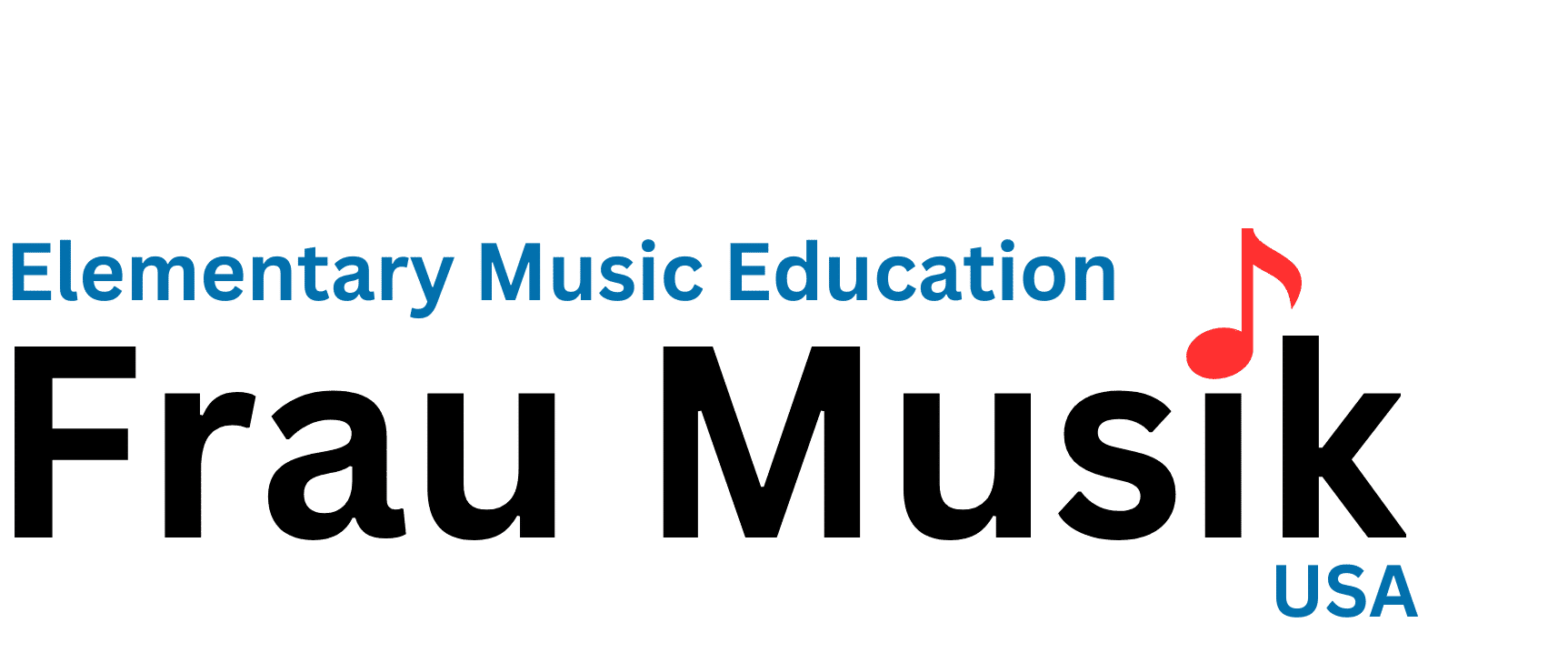
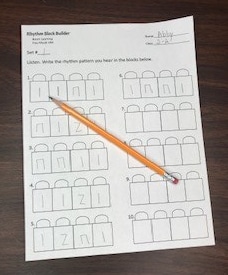
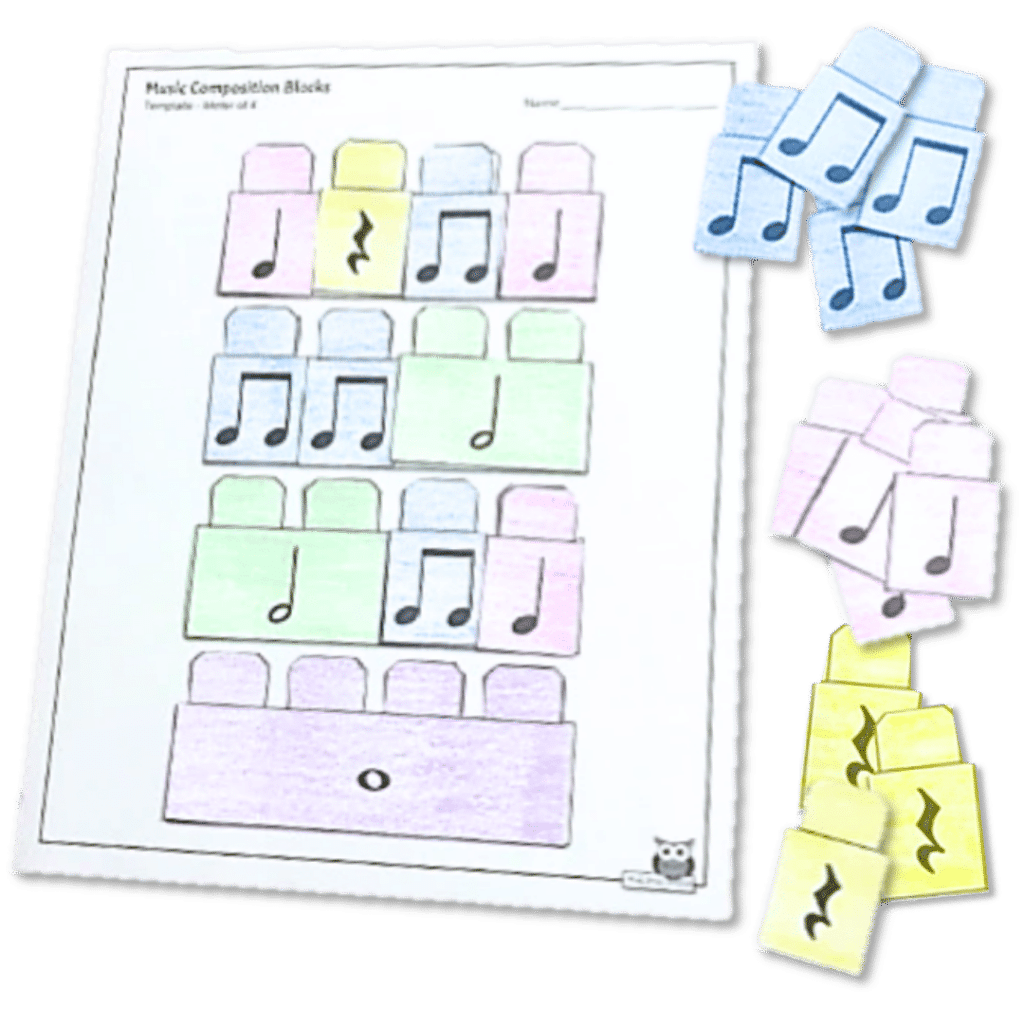

9 Comments
Comments are closed.